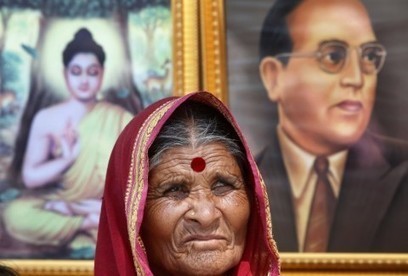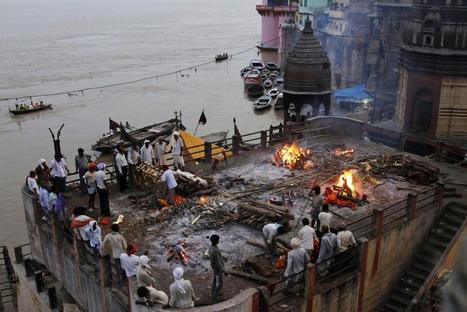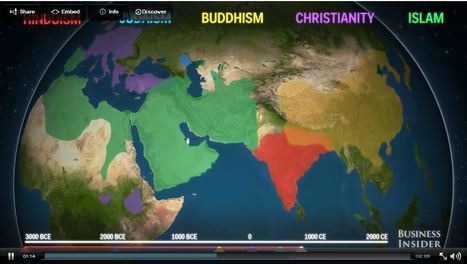Get Started for FREE
Sign up with Facebook Sign up with X
I don't have a Facebook or a X account
 Your new post is loading... Your new post is loading...
 Your new post is loading... Your new post is loading...

Martin Kemp's curator insight,
December 17, 2015 3:35 PM
this is a great example of cultural diffusion. you can see events like this all over the U.S including here in providence with the waterfires, very cool.
David Stiger's curator insight,
November 12, 2018 3:48 PM
Learning about the cultural practices of other societies and civilizations has a way of humanizing unknown people. Of course Westerners can intellectually understand the people in South Asia are human beings, but seeing the images and features of Diwali - especially the parallels with Christianity - makes India seem less foreign and more relatable. Indians celebrating Diwali can also probably relate to the mixed feelings of a shamelessly commercialized holiday. The commercialization in America is borderline manipulative as it pressures people to worry about gifts, money, and shopping. Christmas shopping in the Western world suffocates the holy nature of the birth of Christ - making the whole season overly materialistic, stressful, and self-indulgent. It distorts the human ego creating its own form of darkness. India's festival of lights may be encountering a similar form of dark commercialization where values such as family and goodwill are set aside for spending and material desires. Hopefully, for both Christmas and Diwali, light can be restored by studying and reflecting on our materialist ways and reverting back to the old ways.

Olivia Campanella's curator insight,
December 14, 2018 8:57 PM
This National Geographic video is a beautiful introduction to the cultural practices of the people of India and of Diwali. Diwali is a fall festival symbolizing the triumph of light over darkness. It is a 5 day celebration that includes food, fireworks colored vibrant clothing and sands, and special candles and lamps.
|

Zavier Lineberger's curator insight,
April 24, 2018 1:20 PM
(South Asia) Varanasi, the oldest city in India and the religious center of Hinduism, has an enormous business focusing around cremating bodies to scatter in the Ganges River. Hindus believe the Ganges can break the cycle of reincarnation, so many who do not have money to pay for cremation drop their deceased directly into the river to help them break this cycle. However, the river supports approximately 10% of the entire worlds' population and belief in Ganga, "the self-cleaning river god" allows for Indians to poison the same water they drink out of. It is estimated that 70% of people that use the water become diseased by the sewage and industrial waste poured into it.
India cannot stop dependence on the river. Hindus bath in the holy water of the Ganges, and an increasing population means increased water consumption. It will take concentrated efforts from government and spiritual leaders to change the dominate opinion.
brielle blais's curator insight,
May 1, 2018 6:39 PM
This article showcases how different aspects of geography can both help and harm a country. The Ganges River is incredibly important to India. It is a sacred place where the people believe in Ganges, the idea of allowing the dead to reach eternal liberation. Here, hundreds of bodies are burned a day. If they aren't burned, family members of the deceased let the dead float down the river. This phenomenon attracts many tourist and allows for the economy of India to thrive. However, the bodies are beginning to seriously pollute the river. Areas have become stagnant, full of disease. The problem doesn't end however, as India's population is increasing steadily as well. Water needs to be cleaned to meet the demand or India will face a true crisis.

Kelvis Hernandez's curator insight,
December 14, 2018 2:52 PM
10. Approximately 10% of the world's population lives on the Ganges river basin. Soak that in for a second. 10 % of the world's population rely on one way or another this religiously significant river. The god of the river, Ganga, is worshipped, but the river is also highly polluted. With waste both artificial and human, being thrown into the river and the number of dead bodies that float down to Varanasi, the oldest city in India, to be cremated. As dead bodies flow down the river the people still need to use it to wash. There are ceremonies that the people on the river hold where they dump waste into the river as they know that Ganga will clean the river. The pollution of the river is an issue that will, unfortunately, continue as India's population continues to grow.

Alexis Michelle's curator insight,
April 4, 2016 10:11 AM
Short, sweet and to the point--this video is a great way to show the historical geographies of major world religions. Each of these religions have been "born" somewhere and have grown to different countries. Everyone has a religion well most of everyone and I believe it is very important to know the history of the religion that you are or fit into. Tags: religion, diffusion, culture, Christianity, Islam, Buddhism, Hinduism, Judaism,
Blake Bass's curator insight,
April 7, 2017 10:05 AM
This article is very excellent at explaining where religions are and why they are there,this article relates to human geography and what we are learning because it explains the most practiced religions and where they are.

Taylor Doonan's curator insight,
May 3, 2018 12:23 PM
The five major religions all growing throughout the world, rather quickly, with the exception of Judaism. Hinduism spread when it was established but quickly stopped spreading and does not span much of the world. Buddhism followed a similar path of Hinduism spreading but not going much beyond the continent of Asia, Buddhism is the largest religion in Asia and is also seen as a lifestyle and not just a religion.
|













